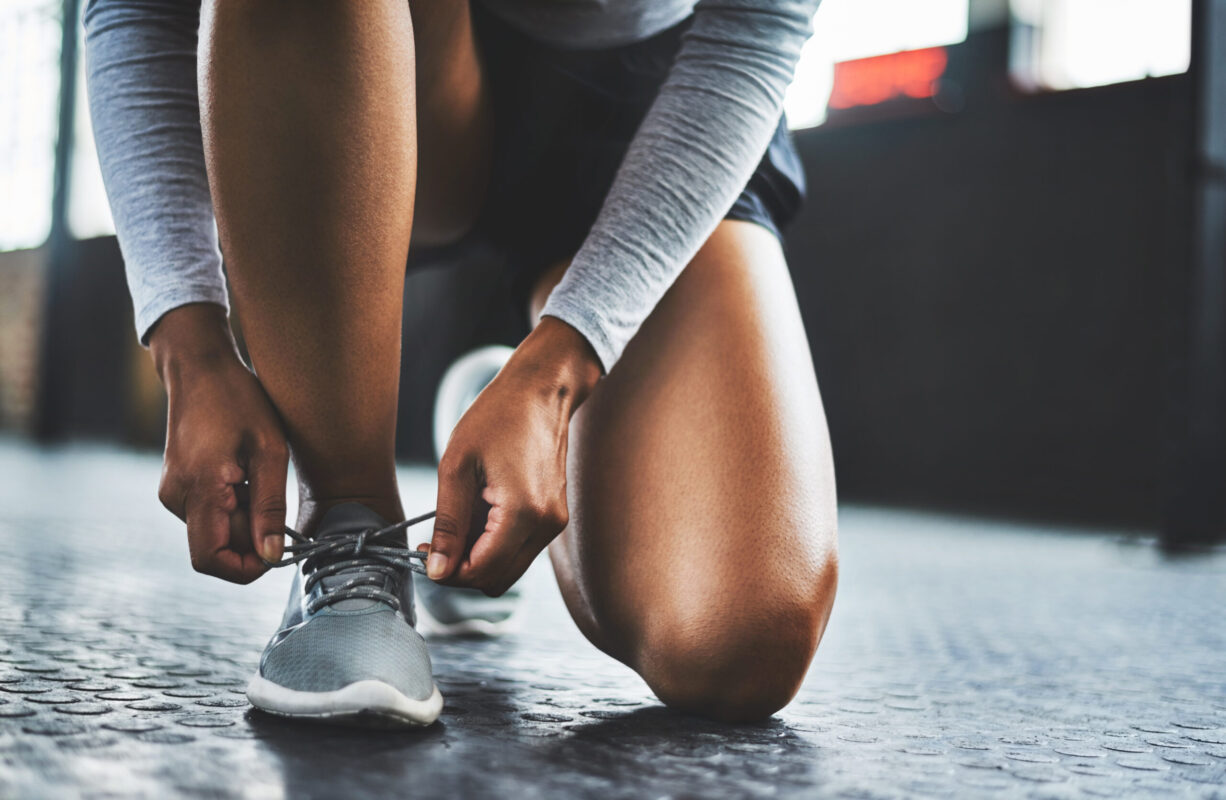You may know about the many benefits of being less sedentary. But to do so, you’ll need to get on your feet, hopefully without any pain or injury.
“Your feet are a huge factor in how effectively you can stand, walk or run,” says Chris Tinker, a physical therapist with BlueCross BlueShield of Tennessee. “Foot injuries can happen to anyone, even star athletes.”
WellTuned spoke with Chris to learn about how foot injuries occur and what exercises can lower the risk of them happening.
Causes of common foot problems
Chris Tinker: Whether you’re a serious athlete or a weekend warrior, anyone can develop a foot problem. Some of the most common causes of foot injuries include:
Over-enthusiasm. It’s great when people get excited about exercising! But if you launch full-speed into an exercise program without giving your feet a chance to get acclimated, you could risk injury.
Overuse. If you exercise a lot, you can develop overuse injuries. One common injury is plantar fasciitis, which is inflammation of the band of tissue running from the heel to the base of the toes.
Inactivity. Your foot and ankle muscles can weaken over time if you don’t use them. Tissues can get tight, and you can even develop circulation problems.
Existing health issues. People with certain health issues need to be extra vigilant about taking good care of their feet. If you have diabetes, you could develop nerve damage, or neuropathy, that can cause numbness or tingling. You might not even realize you’ve injured your foot until it gets serious.
Inappropriate or ill-fitting shoes. You need to choose shoes that are appropriate for your activity and environment. If you’re wearing flats, clogs, crocs or flip flops to go on a walk or stand on concrete all day, you’re asking for foot problems. If your shoes don’t fit well, you can develop all sorts of problems, from blisters to bunions to hammertoe. You may be more likely to slip and fall, too. You also want to avoid wearing worn-out shoes for running or walking. A general rule of thumb is that a pair of running shoes lasts about six months, or 500 miles, whichever comes first.
If you develop any pain or weakness in your feet, see a doctor so you can get the appropriate diagnosis. Doctors, trainers, and physical therapists can help you rehab from injuries, as well as avoid injuring your feet in the future. It’s also a good idea to get advice before starting a new exercise regimen so you’ll know more about how to avoid getting hurt.
5 foot exercises to try
Chris Tinker: While there’s no single exercise program that works for everyone, stretches and exercises can help keep feet functional and pain free.
- The tennis ball roll. Roll a tennis ball under the arch of your foot
- Heel raises. Stand flat on both feet, then shift your weight onto the ball of your feet and raise your heels. Then lower your heels. Repeat. If you have plantar fasciitis, you may want to avoid this as it could increase your pain.
- Seated toe rotations. Sit in a chair and lift one leg straight out. Make slow gentle circles in one direction in the air with your big toe. Then change direction. Repeat with the other leg.
- Ankle pumps. Sit on a firm surface like a bed or floor with your feet out in front of you. Gently point your feet towards your knees as far as you can. Then point them away from you as far as you can. Alternate pointing and flexing your feet. This helps improve lower extremity circulation.
- Marble pick-up. While you’re seated, put a few small objects like marbles and a bowl on the floor in front of you. Use your toes to pick up one object and move it into the bowl. Repeat until you’ve picked up all the marbles.
Also, if you spend a lot of time sitting, make sure to get up and move your feet. Set a timer so you’ll remember to stand up and move or stretch.
Listen to your body
Chris Tinker: You can do more harm than good if you’re not paying attention to your body. If you try a stretch or exercise, and it feels bad, stop doing it and talk to a professional. You don’t want to push through pain and have it develop into a chronic problem. An ounce of prevention is worth a pound of cure.
WellTuned: what your feet may be telling you about your health
Get more information about specific health terms, topics and conditions to better manage your health on bcbst.com. BlueCross BlueShield of Tennessee members can access wellness-related discounts on fitness products, gym memberships, healthy eating and more through Blue365®. BCBST members can also find tools and resources to help improve health and well-being by logging into BlueAccess and going to the Managing Your Health tab.


